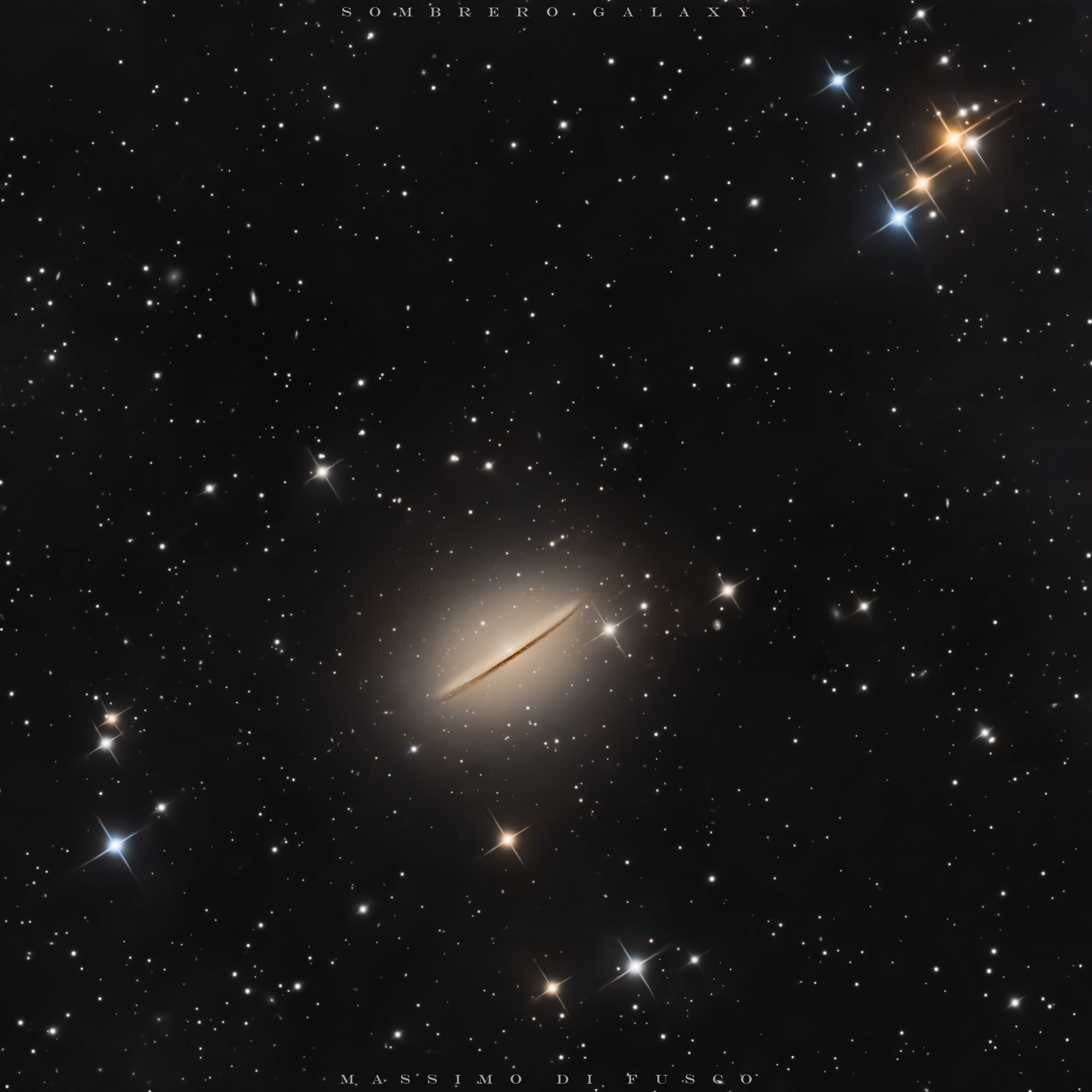The Sombrero Galaxy + Massimo Di Fusco + L-QEF (L-Quad Enhance Filter)
The Sombrero Galaxy
Credit: Massimo Di Fusco (Italy)
Filters: Optolong L-QEF (L-Quad Enhance Filter)
The Sombrero Galaxy is an iconic subject for astronomy enthusiasts, who have well in mind the images captured by the Hubble Space Telescope in the 1990s, and it is always a great challenge to photograph it with one's own equipment.
This photo is one of the most difficult ones I have taken from home, as the subject remains very low to the south surrounded by buildings, trees and street lamps. For its final success I have to thank my friend Lino Benz who kindly lent me the stars, as mine were pitiful due to various defects caused by the architectural and natural obstacles mentioned above.
To get a photo like this from home, with the subject no higher than 34° above the horizon, is crazy cool to me.
Messier 104 (also known as Sombrero Galaxy, M104 or NGC 4594) is a majestic unbarred spiral galaxy located in the constellation Virgo. The galaxy has an apparent magnitude of 8.98 and is located at a distance of 29.3 million light years from Earth. It occupies an area of 8.7 by 3.5 arcminutes in apparent size, corresponding to a linear diameter of about 50000 light years, and is inclined by only 7 degrees to our line of sight, appearing slanted.
Messier 104 has an incredibly bright core, an unusually large central bulge and a conspicuous dark band of dust in its disc. The appearance of the galactic bulge and the band of dust passing through it caused M104 to be named Sombrero.
The Sombrero Galaxy has a supermassive black hole at its centre. Studies conducted in the 1990s using data from the Hubble Space Telescope and the Canada-France-Hawaii Telescope (CFHT) revealed that the speed of revolution of stars close to the galaxy's core would not be possible without an object with a mass of 1 billion solar masses at its centre. The central black hole in M104 is one of the most massive black holes ever detected in any nearby galaxy.
M104 was discovered by Charles Messier's friend and colleague, Pierre Méchain, on 11 May 1781. Charles Messier hand-wrote a note on M104 and several other objects (M105, M106, M107, M108 and M109) and added them to his personal list. However, M104 was not officially included in Messier's catalogue until 1921, when the French astronomer and writer Camille Flammarion found Messier's personal list, identified the object as NGC 4594 or Herschel's H I.43 and declared that it should be added to the catalogue.
Konus 200/1000 @950mm, f/4.8
Player One Poseidon-C camera @-5 °C
Sky-Watcher Eq6r Pro mount
Optolong L-Quad Enhance filter 155x180"
N.I.N.A., APP, PixInsight, PS
Ferrara (Italy)
Better resolution: https://app.astrobin.com/i/xl3eoa
Hope you like it.





